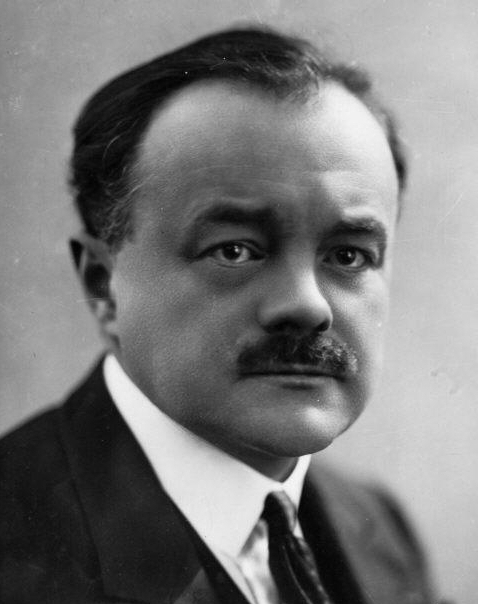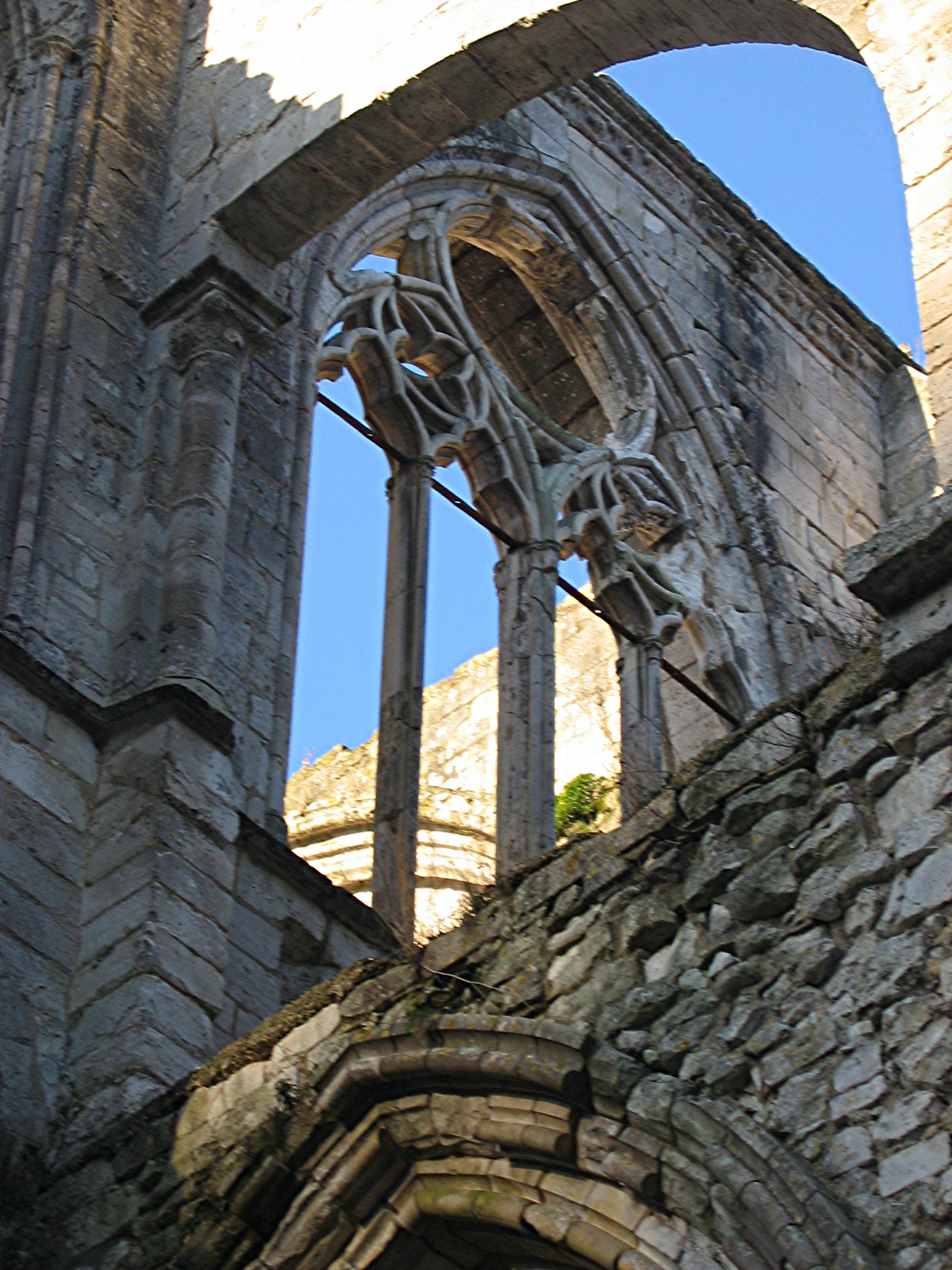|
Pelléas Et Mélisande (Fauré)
''Pelléas et Mélisande'', Op. 80 is a suite derived from incidental music by Gabriel Fauré for Maurice Maeterlinck's Pelléas and Mélisande, play of the same name. He was the first of four leading composers to write music inspired by Maeterlinck's drama. Claude Debussy, Debussy, Arnold Schoenberg, Schoenberg and Jean Sibelius, Sibelius followed in the first decade of the 20th century. Fauré's music was written for the London production of Maeterlinck's play in 1898. To meet the tight deadline of the production, Fauré reused some earlier music from incomplete works and enlisted the help of his pupil Charles Koechlin, who orchestrated the music. Fauré later constructed a four-movement suite from the original theatre music, orchestrating the concert version himself. History The score was commissioned in 1898 by Mrs Patrick Campbell for the play's first production in English, in which she starred with Johnston Forbes-Robertson and John Martin-Harvey. Stella Campbell had invite ... [...More Info...] [...Related Items...] OR: [Wikipedia] [Google] [Baidu] |
Scala Theatre
The Scala Theatre was a theatre in Charlotte Street, London, off Tottenham Court Road. The first theatre on the site opened in 1772; the last was demolished in 1969, after a catastrophic fire. From 1865 to 1882, the theatre was known as the Prince of Wales's Theatre (not to be confused with Prince of Wales Theatre). Origins The theatre began on this site as The New Rooms where concerts were performed, in Charlotte Street, in 1772, under the management of Francis Pasquali. Popularity, and royal patronage led to the building's enlargement by James Wyatt, and its renaming as the King's Concert Rooms (1780–1786). It then became Rooms for Concerts of Ancient Music and Hyde's Rooms (1786–1802), managed by ''The Directors of Concerts and Ancient Music''. In 1802, a private theatre club managed by Captain Caulfield, the ''"Pic-Nics"'', occupied the building and named it the Cognoscenti Theatre (1802–1808). It became the New Theatre (1808–1815) and was extended and fitted out ... [...More Info...] [...Related Items...] OR: [Wikipedia] [Google] [Baidu] |
Gerald Larner
Gerald Larner (9 March 1936 – 18 December 2018) was a British music critic. He began his career writing for ''The Guardian'', joining as assistant music critic in 1962 and as chief Northern music critic (1965–93). He wrote for ''The Times'' from the 1990s. He composed a libretto for a John McCabe opera and wrote a biography of Maurice Ravel Joseph Maurice Ravel (7 March 1875 – 28 December 1937) was a French composer, pianist and conductor. He is often associated with Impressionism in music, Impressionism along with his elder contemporary Claude Debussy, although both composer .... The Ravel biography was well received in France as well as Britain, and Larner was appointed Officier des Arts et des Lettres by the French Ministry of Culture and Communication in 2001. He married Celia White in 1959, with whom he had two daughters; the marriage ended in 1987. His second marriage was to Lynne Walker. Selected publications * ''Glasgow Style'' (with Celia Larner) * ''Maur ... [...More Info...] [...Related Items...] OR: [Wikipedia] [Google] [Baidu] |
Camille Chevillard
Paul Alexandre Camille Chevillard (14 October 1859 – 30 May 1923) was a French composer and conductor. Biography According to ''Musiciens français d'Aujourd'hui'', Camille Chevillard was the son of the famous cellist and composer , who taught at the Paris Conservatoire. He entered the Conservatoire in the piano class of Georges Mathias and graduated in 1880 with second prize. He never studied composition. Chevillard began composing chamber music in 1882: first a quintet for piano and strings, then a quartet, a trio and sonatas, which were performed in various concerts, notably at the Société Nationale de Musique. He became voice coach for the Concerts-Lamoureux(1887) and in this capacity he took part in the "heroic and legendary" Paris premiere of ''Lohengrin'' at the Eden-Théâtre in 1887. On 17 April 1888, he married Marguerite Victoire Lamoureux (1861-1941), a singing teacher and daughter of Charles Lamoureux. In 1889, together with Fritz Schneklud (the cellist in ... [...More Info...] [...Related Items...] OR: [Wikipedia] [Google] [Baidu] |
Orchestre Lamoureux
The Orchestre Lamoureux () officially known as the Société des Nouveaux-Concerts and also known as the Concerts Lamoureux) is an orchestral concert society which once gave weekly concerts by its own orchestra, founded in Paris by Charles Lamoureux in 1881. It has played an important role in French musical life, including giving the premieres of Emmanuel Chabrier's '' España'' (1883), Gabriel Fauré's ''Pavane'' (1888), Claude Debussy's '' Nocturnes'' (1900 and 1901) and '' La mer'' (1905), Maurice Ravel Joseph Maurice Ravel (7 March 1875 – 28 December 1937) was a French composer, pianist and conductor. He is often associated with Impressionism in music, Impressionism along with his elder contemporary Claude Debussy, although both composer ...'s '' Menuet antique'' (1930) and Piano Concerto in G major (1932). Principal conductors * Charles Lamoureux (1881–1897) * Camille Chevillard (1897–1923) * Paul Paray (1923–1928) * Albert Wolff (1928–193 ... [...More Info...] [...Related Items...] OR: [Wikipedia] [Google] [Baidu] |
Jewels (ballet)
''Jewels'' is a three-act ballet created for the New York City Ballet by co-founder and founding choreographer George Balanchine. It premièred on Thursday, 13 April 1967 at the New York State Theater, with sets designed by Peter Harvey and lighting by Ronald Bates. ''Jewels'' has been called the first full-length abstract ballet. It has three related movements: '' Emeralds'', '' Rubies'', and '' Diamonds'' (usually separated by intermissions). It can also be seen as three separate ballets, linked by their jewel-colored costumes. Balanchine commented: "The ballet had nothing to do with jewels. The dancers are just dressed like jewels." Each of the three acts features the music of a different composer: ''Emeralds'' is set to the music of Gabriel Fauré, ''Rubies'' to the music of Igor Stravinsky and ''Diamonds'' to music by Pyotr Ilyich Tchaikovsky. Costumes The costumes were created by Balanchine's long-time collaborator Barbara Karinska, who created a distinct look for ea ... [...More Info...] [...Related Items...] OR: [Wikipedia] [Google] [Baidu] |
George Balanchine
George Balanchine (; Various sources: * * * * born Georgiy Melitonovich Balanchivadze;, Romanization of Georgian, : April 30, 1983) was a Georgian-American ballet choreographer, recognized as one of the most influential choreographers of the 20th-century. Styled as the father of American ballet, he co-founded the New York City Ballet and remained its artistic director for more than 35 years.Joseph Horowitz (2008)''Artists in Exile: How Refugees from 20th-century War and Revolution Transformed the American Performing Arts.'' HarperCollins. His choreography is characterized by plotless ballets with minimal costume and décor, performed to classical and neoclassical music. Born in St. Petersburg, Russia, Balanchine took the standards and technique from his time at the Imperial Ballet School and fused it with other schools of movement that he had adopted during his tenure on Broadway theatre, Broadway and in Cinema of the United States, Hollywood, creating his signature " ... [...More Info...] [...Related Items...] OR: [Wikipedia] [Google] [Baidu] |
Henri Büsser
Paul Henri Büsser (16 January 1872 – 30 December 1973) was a French classical composer, organist, conductor and teacher. Among his teachers were César Franck, Charles Gounod and Jules Massenet. In addition to his own compositions Büsser edited and orchestrated a wide range of music – mostly but not exclusively French – dating from the 17th to the 20th centuries. He was at various times in his career the conductor of the Paris Opéra and the Opéra-Comique, and professor of composition at the Conservatoire de Paris. Life and career Büsser was born in Toulouse of partly German ancestry. He was the son of an organist, Fritz Büsser (1846–1879), and sang as a boy in the choir of Toulouse Cathedral under before entering the École Niedermeyer de Paris in 1885 to study with Alexandre Georges.Kelly, Barbara L“Büsser (Busser), (Paul-)Henri” ''Grove Music Online'', Oxford University Press, 2001. He entered the Conservatoire de Paris in 1889, studying organ with César ... [...More Info...] [...Related Items...] OR: [Wikipedia] [Google] [Baidu] |
Charles Van Lerberghe
Charles van Lerberghe (21 October 1861 – 26 October 1907) was a Belgians, Belgian author who wrote in French language, French and was particularly identified with the Symbolism (movement), Symbolist movement. The growing atheism and anticlerical stance evident in his later work made it popular among those who challenged establishment norms at the start of the 20th century. Life Charles van Lerberghe was born to a Flemish people, Flemish father and Walloons, Walloon mother living in easy circumstances in Ghent. His father, also named Charles, died when the boy was seven and his mother when he was ten. Placed under the guardianship of an uncle of Maurice Maeterlinck, he then attended the Jesuit Sint-Barbaracollege, Collège Ste-Barbe in Ghent, along with the future poets Maeterlinck and Grégoire le Roy (1862–1941). Later he studied for a Doctor of Philosophy, D.Phil in Brussels, which he gained in 1894. He was also participating with his friends in the magazines encouraging the ... [...More Info...] [...Related Items...] OR: [Wikipedia] [Google] [Baidu] |
La Chanson D'Ève
LA most frequently refers to Los Angeles, the second most populous city in the United States of America. La, LA, or L.A. may also refer to: Arts and entertainment Music *La (musical note), or A, the sixth note *"L.A.", a song by Elliott Smith on ''Figure 8'' (album) * ''L.A.'' (EP), by Teddy Thompson *''L.A. (Light Album)'', a Beach Boys album * "L.A." (Neil Young song), 1973 *The La's, an English rock band *L.A. Reid, a prominent music producer *Yung L.A., a rapper *Lady A, an American country music trio * "L.A." (Amy Macdonald song), 2007 *"La", a song by Australian-Israeli singer-songwriter Old Man River *''La'', a Les Gordon album Other media * l(a, a poem by E. E. Cummings *La (Tarzan), fictional queen of the lost city of Opar (Tarzan) *''Lá'', later known as Lá Nua, an Irish language newspaper *La7, an Italian television channel *LucasArts, an American video game developer and publisher * Liber Annuus, academic journal Business, organizations, and government agenc ... [...More Info...] [...Related Items...] OR: [Wikipedia] [Google] [Baidu] |
Albert Wolff (conductor)
Albert Louis Wolff (19 January 1884 – 20 February 1970) was a French conductor and composer of Dutch descent. Most of his career was spent in European venues, with the exception of two years that he spent as a conductor at the Metropolitan Opera and a few years in Buenos Aires during the Second World War. He is most known for holding the position of principal conductor with the Opéra-Comique in Paris for several years. He was married to the French mezzo-soprano Simone Ballard. Biography Early life and education Wolff was born in Paris, of Dutch parents, though he was a French citizen from birth, never lived in the Netherlands, and never had a Dutch passport. When only 12 years old, he began his musical education at the Paris Conservatoire. There, he studied with such teachers as André Gedalge, Xavier Leroux, and Paul Antonin Vidal. At the same time he played the piano in cabarets and was organist at the Église Saint-Thomas-d'Aquin (Paris) for four years. Upon graduat ... [...More Info...] [...Related Items...] OR: [Wikipedia] [Google] [Baidu] |
Abbey Of Saint Wandrille
Fontenelle Abbey or the Abbey of St. Wandrille is a Benedictine monastery in the commune of Rives-en-Seine. It was founded in 649 near Caudebec-en-Caux in Seine-Maritime, Normandy, France. First foundation It was founded by Wandregisel (d. 22 July 668, Wandrille in French) and his nephew Godo, on land obtained through the influence of Wandregisel's friend Ouen, Archbishop of Rouen. Wandrille, being of the royal family of Austrasia, held a high position in the court of his kinsman Dagobert I, but wishing to devote his life to God, he retired to the abbey of Montfaucon-d'Argonne, in Champagne, in 629. Later he went to Bobbio Abbey and then to Romainmôtier Abbey, where he remained for ten years. In 648 he returned to Normandy and established the monastery of Fontenelle,Alston, George Cy ... [...More Info...] [...Related Items...] OR: [Wikipedia] [Google] [Baidu] |



